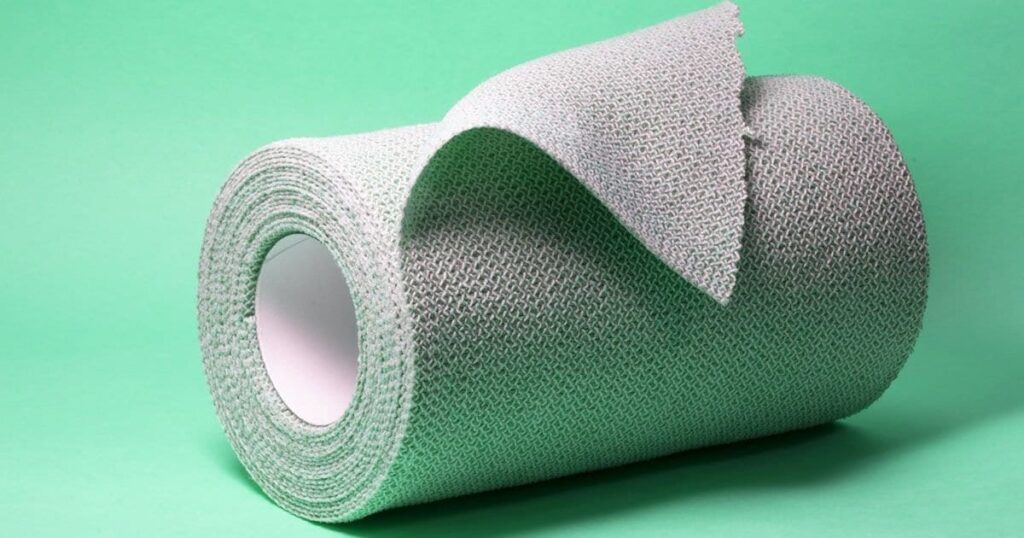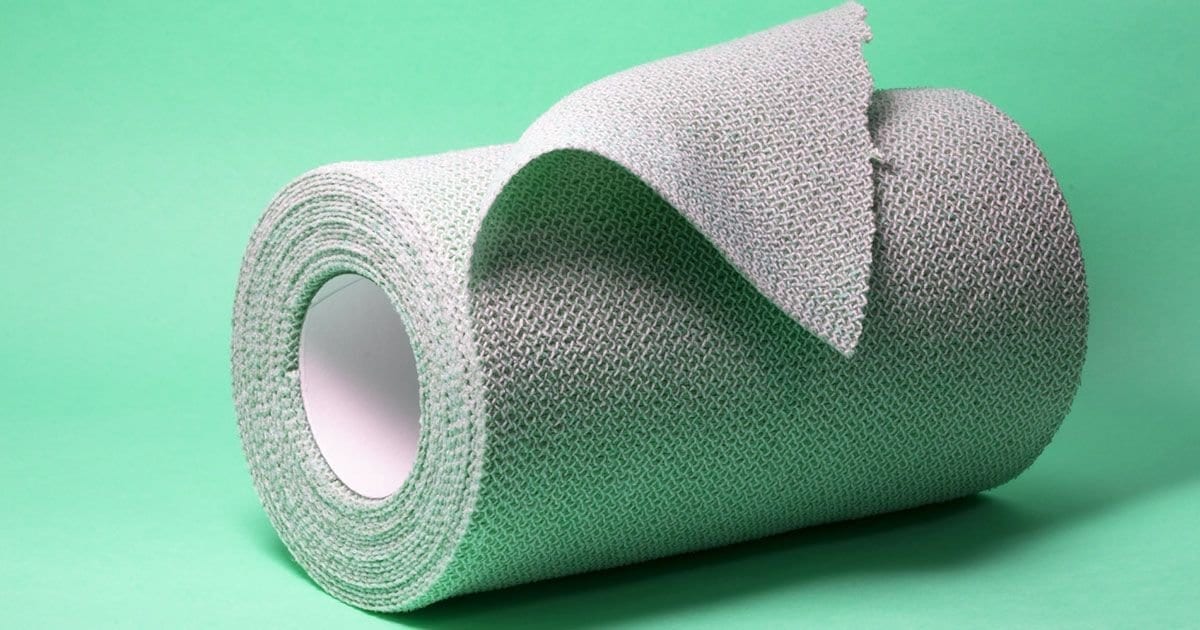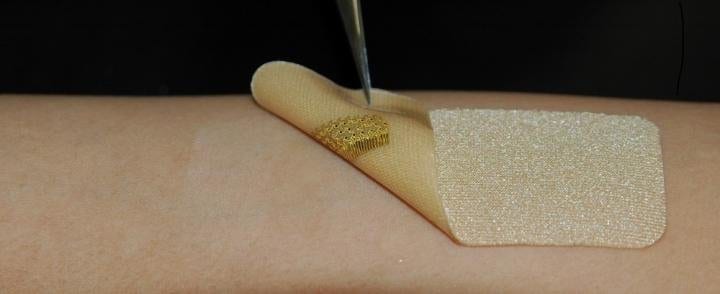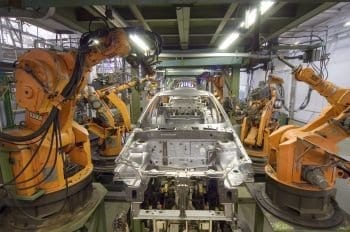
Imperial researchers have developed a new bioinspired material that interacts with surrounding tissues to promote healing.
Materials are widely used to help heal wounds: Collagen sponges help treat burns and pressure sores, and scaffold-like implants are used to repair broken bones. However, the process of tissue repair changes over time, so scientists are looking to biomaterials that interact with tissues as healing takes place.
Creatures from sea sponges to humans use cell movement to activate healing. Our approach mimics this by using the different cell varieties in wounds to drive healing.
Dr Ben Almquist, Department of Bioengineering
Now, Dr Ben Almquist and his team at Imperial College London have created a new molecule that could change the way traditional materials work with the body. Known as traction force-activated payloads (TrAPs), their method lets materials talk to the body’s natural repair systems to drive healing.
The researchers say incorporating TrAPs into existing medical materials could revolutionise the way injuries are treated. Dr Almquist, from Imperial’s Department of Bioengineering, said: “Our technology could help launch a new generation of materials that actively work with tissues to drive healing.”
The findings are published in Advanced Materials.
Cellular call to action
After an injury, cells ‘crawl’ through the collagen ‘scaffolds’ found in wounds, like spiders navigating webs. As they move, they pull on the scaffold, which activates hidden healing proteins that begin to repair injured tissue.
The researchers in the study designed TrAPs as a way to recreate this natural healing method. They folded the DNA segments into three-dimensional shapes known as aptamers that cling tightly to proteins. Then, they attached a customisable ‘handle’ that cells can grab onto on one end, before attaching the opposite end to a scaffold such as collagen.
This intelligent healing is useful during every phase of the healing process, has the potential to increase the body’s chance to recover, and has far-reaching uses on many different types of wounds.
Dr Ben Almquist, Department of Bioengineering
During laboratory testing of their technique, they found that cells pulled on the TrAPs as they crawled through the collagen scaffolds. The pulling made the TrAPs unravel like shoelaces to reveal and activate the healing proteins. These proteins instruct the healing cells to grow and multiply.
The researchers also found that by changing the cellular ‘handle’, they can change which type of cell can grab hold and pull, letting them tailor TrAPs to release specific therapeutic proteins based on which cells are present at a given point in time. In doing so, the TrAPs produce materials that can smartly interact with the correct type of cell at the correct time during wound repair.
This is the first time scientists have activated healing proteins using differing cell types in man-made materials. The technique mimics healing methods found in nature. Dr Almquist said: “Creatures from sea sponges to humans use cell movement to activate healing. Our approach mimics this by using the different cell varieties in wounds to drive healing.””
From lab to humans
This approach is adaptable to different cell types, so could be used in a variety of injuries such as fractured bones, scar tissue after heart attacks, and damaged nerves. New techniques are also desperately needed for patients whose wounds won’t heal despite current interventions, like diabetic foot ulcers, which are the leading cause of non-traumatic lower leg amputations.
TrAPs are relatively straightforward to create and are fully man-made, meaning they are easily recreated in different labs and can be scaled up to industrial quantities. Their adaptability also means they could help scientists create new methods for laboratory studies of diseases, stem cells, and tissue development.
Aptamers are currently used as drugs, meaning they are already proven safe and optimised for clinical use. Because TrAPs take advantage of aptamers that are safe for humans, they may be able to take a shorter path to the clinic than methods that start from ground zero.
Dr Almquist said: “TrAPs provide a flexible method of actively communicating with wounds, as well as key instructions when and where they are needed. This intelligent healing is useful during every phase of the healing process, has the potential to increase the body’s chance to recover, and has far-reaching uses on many different types of wounds. This technology could serve as a conductor of wound repair, orchestrating different cells over time to work together to heal damaged tissues.”
Learn more: New material could ‘drive wound healing’ using the body’s inbuilt healing system
The Latest on: Traction force-activated payloads
[google_news title=”” keyword=”traction force-activated payloads” num_posts=”10″ blurb_length=”0″ show_thumb=”left”]
via Google News
The Latest on: Traction force-activated payloads
- Top 6 Best Neck Traction Device in 2024on April 23, 2024 at 7:30 pm
Utilizing a neck traction device can be a successful solution to alleviate neck pain. These devices function by subtly extending the neck muscles and decompressing the spinal discs, thereby easing ...
- Air Force confirms first successful AI dogfighton April 19, 2024 at 1:00 am
The U.S. Air Force on Wednesday publicly confirmed the first successful dogfight between a fighter jet piloted by artificial intelligence (AI) and a human-piloted aircraft. The AI-versus-human ...
- Velocipede Summaryon April 11, 2024 at 5:00 pm
A wind blowing at the rate of twenty-five miles an hour, which is only a brisk wind, would give a tractive force of nearly fifty pounds upon a sail four feet square. The same journal also gives an ...
- Air Forceon March 11, 2024 at 6:30 pm
The Department of the Air Force was created with the signing of the National Security Act of 1947. The Air Force’s missions are broken down into Air and Space Superiority, Global Attack ...
- Naked Gay' Tractionon February 11, 2023 at 1:31 pm
Raphael Andrioli (Raphael)Lucas Bouvier (Lucas)Sacha Delage (Sacha)Enzo Lemercier (Enzo)Justin Leroy (Justin)Robin Leroy (Robin)Mathis Weber (Mathis) Antoine Lebel Discover "Naked Gay' Traction ...
- NATO Response Force activated for first timeon February 26, 2022 at 4:20 am
NATO Response Force has been activated for the first time in the history, as a defensive measure in response to Russia's ongoing invasion of Ukraine. NATO Supreme Allied Commander General Tod Wolters ...
- Top 5 Best Snow Traction Matson December 10, 2020 at 4:00 pm
If you drive in harsh winter conditions, it is a good idea to keep some sort of snow traction mat in your vehicle ... spikes that dig against the force of the vehicle. Most importantly, the ...
- What Exactly Is The Space Force?on January 26, 2020 at 11:15 pm
I cover the future of aviation, astronautics, and technology. For some onlookers, the Space Force’s formation raises an important question: What exactly is the Space Force going to do?
- Traction Control – what is it, and how does it work?on December 25, 2019 at 10:20 am
Traction control is a safety feature that has existed for decades in various forms, but it became a compulsory requirement on all new cars built from 2011 onwards. As with many car safety features ...
via Bing News











